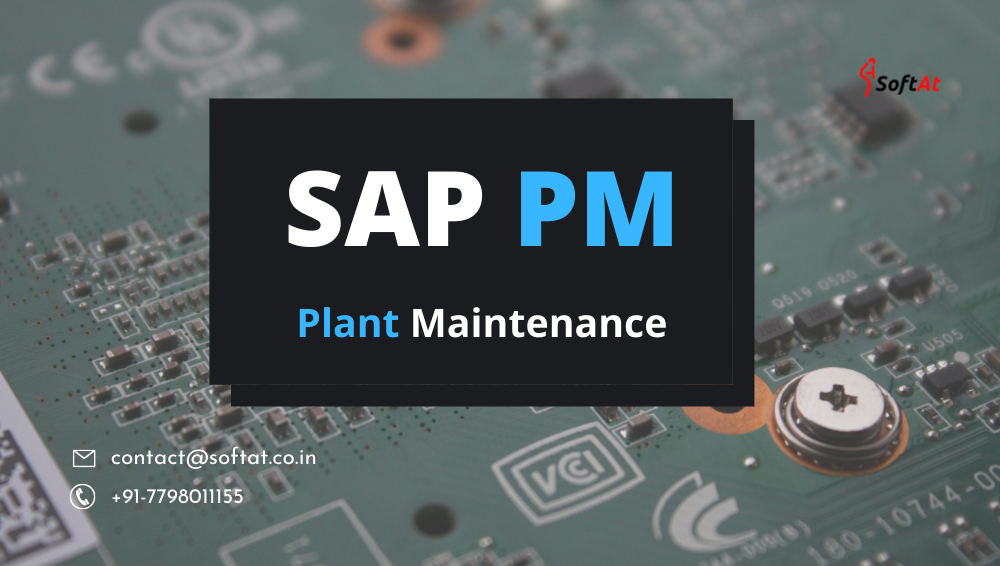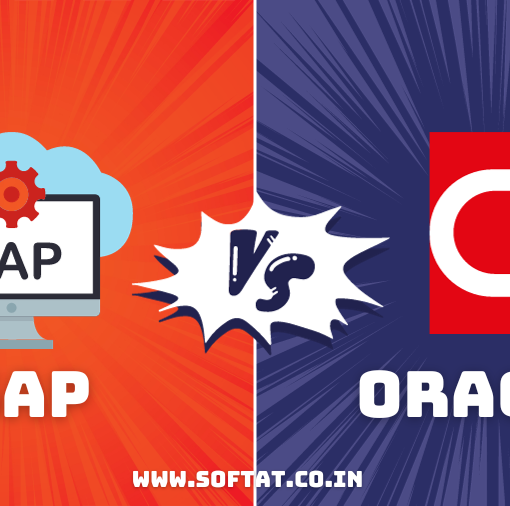What is SAP PM?
SAP PM (SAP Plant Maintenance) is a program for industrial companies that may depict all critical maintenance duties for technical systems. Inspection, upkeep, and real repair are examples of these.
SAP Plant Maintenance (PM) is a component of the SAP ERP Central Component (ECC) that assists organizations in maintaining and supporting their equipment and systems. Materials Management (MM), Quality Management (QM), Production Planning (PP), Sales and Distribution (SD), Finance (FI), Controlling (CO), and Human Resources (HR) are all integrated into SAP PM (HR).
SAP PM enables you to manage maintenance requests and automate some repairs. It can be used to keep track of issues in the ECC, arrange labor and material activities, and track and settle charges.
The integration of SAP PM with the other ECC modules maintains the data in the module up to date and automatically activates operations in other functions when needed. For example, a Repair operation in MM or buying may trigger a purchase demand for non-stock goods.
Uses of SAP PM
The overall goal of SAP PM is to ensure that systems are available at all times and that their service life is as long as possible. On the one hand, this decreases downtimes, while on the other, it avoids or delays costly replacements.
There are four types of users who gain the most from SAP PM:
- PM can be used by maintenance and operations managers to get metrics on equipment performance or maintenance deployments. By running reports on work that is scheduled, in progress, or done, they can use PM to improve maintenance decision-making. With precise and up-to-date data on equipment maintenance history and proportional maintenance costs, management can budget for equipment replenishment.
- Workers on the production line and users of equipment who can use PM to handle maintenance issues more quickly and effectively. Preventive maintenance, for example, can be coordinated with production and unscheduled maintenance to ensure that the work is completed swiftly and without causing disruption to output.
- Technicians and maintenance professionals who can utilise PM to improve work processes and efficiency. Technicians, for example, can utilise PM to review maintenance records.
- PM can be used by purchasing departments to coordinate and execute the procurement of non-stock spare parts and services required for maintenance work. In most cases, these groups are combined with maintenance groups.
Functions of SAP PM
The SAP module PM’s functional scope can be separated into the following subareas:
- Technical object structuring and management (functional units as well as individual plants, machines, and so on)
- Preventive maintenance is the planning of work and maintenance.
- Notifications, orders, capacity planning, confirmations, and maintenance history are all part of the maintenance process.
- Data collection, compression, and evaluation from maintenance are all part of the information system.
Let’s take a closer look at these different functional areas:
Technical Objects
SAP Plant Maintenance makes use of so-called technical objects, which are utilized to map and organize the system’s existing plants. Pieces of equipment are one of the most crucial objects. This word is used by SAP to define company items that must be managed separately. Individual assets or machinery are usually involved. These can be built in the Plant Maintenance module and include information such as the usage site, construction year, and warranty period. The equipment master record is the foundation for all subsequent duties, including the maintenance process, maintaining records, collecting data, recording working times, and cost tracking.
The so-called functional locations are another SAP PM object. These are hierarchically formed functional units of a whole system. Functional, process-oriented, or spatial structures are all possible. A functional site is made up of many pieces of equipment that can be set up and taken down.
The system configuration (representing complicated system structures) is also included in the functional domain of the technical objects, which ensures, among other things, the availability of valid replacement parts. Maintenance bills of material, which represent all components of an assembly or product, round out the features at this point.
Preventive Maintenance
The goal of preventative maintenance is to ensure that technological items are available at a high level for a long time. SAP PM allows you to describe a sequence of maintenance jobs in the form of task lists for this purpose. As a result, recurring tasks can be standardized and better scheduled.
Maintenance planning is provided by SAP PM for routine maintenance. Inspections, maintenance, and repairs can all be scheduled ahead of time with a maintenance plan. It can be used to comply with manufacturer recommendations, regulatory laws, and environmental protection requirements, among other things. Scheduled maintenance also adds to excellent product quality by reducing costly downtime.
Maintainenance Processing
This is the most important aspect of SAP PM. It is in charge of the maintenance process’s operational execution and consists of multiple steps that do not necessarily have to follow one another.
The maintenance notification is the first stage. This capability allows employees to check the state of technological objects, report a fault, and seek damage repair. The second stage, carrying out the maintenance activities, comes after that. In SAP PM, a maintenance order is created for this. It allows for precise planning of upcoming tasks as well as tracking of work progress. It’s also used to allocate costs. Higher-level capacity planning can also be used to decide which person can or should do which activities on which days if necessary.
The processing status of maintenance orders can be documented using confirmations. These can include, for example, the material used, external services used, and the time required.
How does SAP PM look like in S/4HANA?
SAP PM’s functions were relocated to SAP Enterprise Asset Management in the newest SAP S/4HANA product version (EAM). This component allows you to manage fixed assets during their entire life cycle. New functionalities for preventive maintenance (AI), remote object monitoring, and real-time analytics have been included.
SAP S/4HANA offers the following maintenance solutions, which can be used alone or in combination:
- SAP Asset Intelligence Network: Cloud-based data gathering and provisioning, including access for asset owners and operators
- Measure asset performance and optimise maintenance methods using SAP Asset Strategy and Performance Management.
- SAP Predictive Maintenance and Service: Use proactive maintenance tools, such as machine learning and IoT data processing, to detect, forecast, and prevent equipment downtime.
- Mobile apps for service technicians from SAP Asset Manager
Key Features of SAP PM:
Asset Master Data Management: SAP PM allows organizations to create a centralized repository for managing asset master data. This includes information such as equipment details, technical specifications, maintenance history, and documentation. Having a single source of truth for asset data enables better decision-making, improves maintenance planning, and enhances overall asset visibility.
Preventive Maintenance Planning: SAP PM enables the creation of preventive maintenance plans based on time, usage, or performance-based triggers. By defining maintenance schedules and associated tasks, organizations can proactively address potential issues before they become major problems. This helps reduce equipment downtime, increase asset reliability, and extend asset lifecycles.
Work Order Management: The work order management functionality in SAP PM streamlines the entire maintenance process. It allows users to create work orders, assign them to technicians, and track progress. Work orders can include details such as task descriptions, required materials, labor hours, and cost estimates. By efficiently managing work orders, organizations can optimize resource allocation, improve response times, and enhance maintenance productivity.
Integration with Enterprise Modules: SAP PM seamlessly integrates with other SAP modules, enabling cross-functional collaboration and data sharing. For example, integration with materials management (MM) ensures that the required spare parts are readily available for maintenance activities. Integration with finance and controlling (FICO) allows for better cost tracking and budget management. Such integrations provide a holistic view of asset management, supporting data-driven decision-making and enhancing operational efficiency.
Conclusion:
Efficient asset management is a critical aspect of any organization’s success, and SAP PM provides a powerful solution to streamline asset management processes. By leveraging its comprehensive features, including asset master data management, preventive maintenance planning, work order management, and integration with other enterprise modules, businesses can optimize their maintenance operations, improve asset performance, and increase operational efficiency. With real-time reporting and analytics, organizations can make data-driven decisions, ensure compliance, and enhance workplace safety. SAP PM empowers businesses to proactively manage their assets, reduce downtime, and maximize the lifespan of their equipment, ultimately contributing to their overall success in a competitive market.





